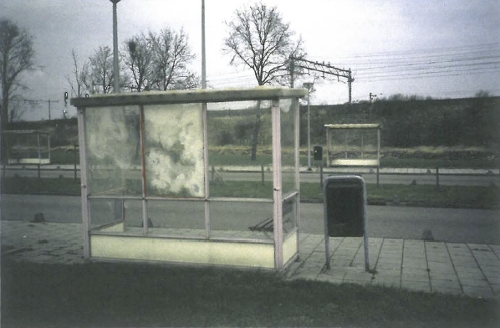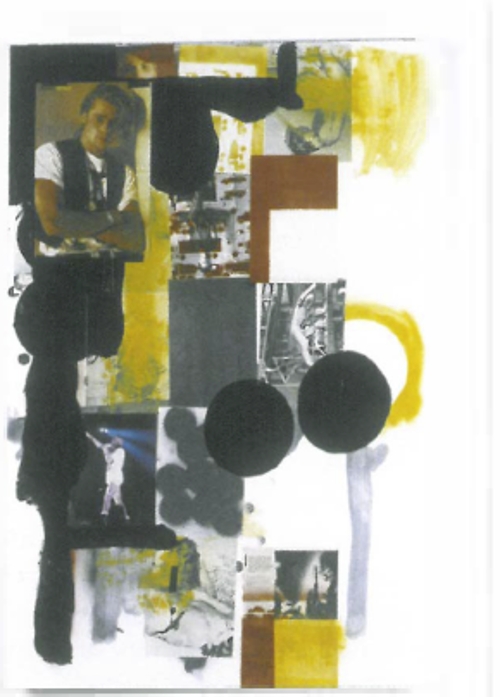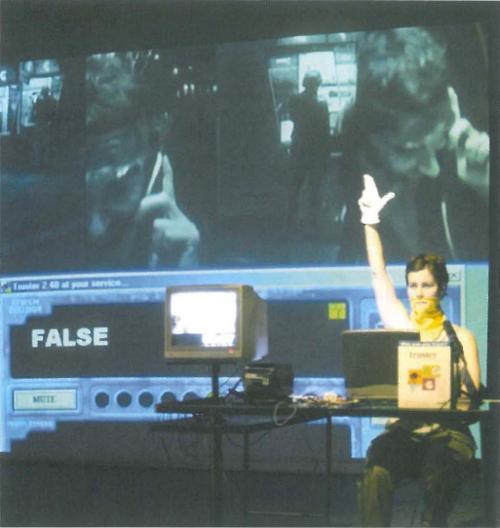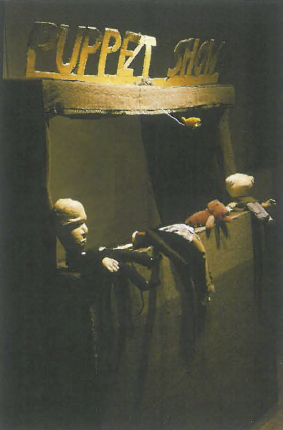
A large-scale exhibition of considerable variety and innovation, [in]stall(s) features the work of eleven emerging Tasmanian artists in an eclectic mix of new and traditional media, addressing the notion of physical and social architecture through experience: the relationship between external (built) and internal (personal) space. The exhibition is predicated on the engagement between the artists, their works and the site itself.
Whilst this is not a new curatorial theme, it is interpreted here, by both the show's co-ordinators and exhibitors, as something original and compelling.
As one might deduce, this is a site-specific installation show; the participating artists all address this artform differently and idiosyncratically. They are a challenging group of some of the most original, iconoclastic and unconventional younger Tasmanian practitioners, chosen for their proven track record in installation practice.
Central to the show's premise is the physicality of the exhibition space and the use to which it is put. Thus, the gallery is sectioned off into niches, nooks or 'stalls'. As the co-ordinators, Mish Meijers and Tricky Walsh, explain, 'the delineation of the gallery space [by lines measuring out each separate exhibiting area] offers a unique viewing experience in which the viewer is encouraged to develop their [own] sense of the work and any possible visual relationships'.
The initial impression, upon entering the gallery is of happily controlled chaos, a profusion of exhibits glimpsed before embarking on a more considered viewing. Rebecca Cootes' Wavering, a striking work in glass sheeting and aluminium, explores memory as a construct of reality and illusion. Her chosen media work well as a metaphor for something essentially intangible and insubstantial.
Stand-out works in the show include Matt Warren's multi-CD sound installation, presenting voices, static and everyday noises in an abstracted way to replicate a 'ghost in the machine' He uses this to symbolize the filtered and altered truths fed to us in today's society. The visual element of this piece – the simple device of scrunching newspaper across 'his' space, the presence of the sound equipment and the use of bare light bulbs strewn on the floor – exemplifies the success of a 'less-is-more' approach.
Similarly, Jonathan Hodgkin's minimal piece, Sojourner: a trio of large plastic tube 'frames' suspended in mid-air, sufficient in themselves – without any image to surround. Covered in acrylic and paper, they possess an Arte Povere beauty and have their genesis in the 'dodgy' electrical wiring strung up ad hoc to illuminate historical monuments and churches visited by Hodgkin on a residency in Milan.
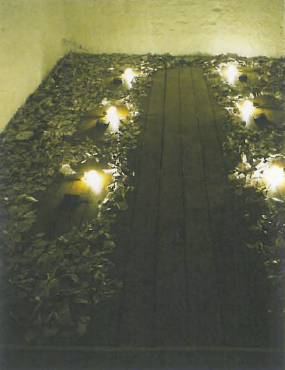
Sally Rees' two large-scale self-portrait sketches -- drawn on the gallery wall -- rejoice in the pseudo-serious title Cartography of the Head-bang: Susie and Sally 18/07/04, 1.30am. I also enjoyed Tristan Stowards' home-made puppet-show, with its invitation 'Please play with the puppets' and a list of suggestions of plays and stories to enact – relentlessly unpretentious and slyly amusing.
Considering titles again, Kylie Johnson's work, Eating out alone, I lose myself intrigues. This installation – of vinyl lettering, colour digital stills from video and a restaurant napkin – documents one of Johnson's sorties out on the town, part of a larger, ongoing preoccupation and work-in-progress to do with the 'action of being seduced.' This has involved several related installations, videos and exhibitions bravely recording Johnson's notion that 'to be seduced is to be immersed in someone or something to the point where individual identity dissolves.'
Only a couple of very minor quibbles spring to mind about this refreshing exhibition. I found, on my initial visit to the show, that the highly entertaining artists' statement panels were, in some cases, difficult to read because of the low lighting around some works. A couple of installations probably needed to be less dimly lit. Moreover, it was clear that, despite the curators' intentions, some gallery-goers mistook the demarcation of the gallery space into discrete units indicated by lines on the floor as a 'keep out' sign, preventing them from getting close to and interacting with the individual works.
This is not to detract from a strong, well-resolved exhibition which highlighted the variety of approaches to which installation lends itself. [in]stall(s) was a keynote exhibition in the recent Tasmanian Living Artists' Week festival and proved to be one of the most satisfying.


